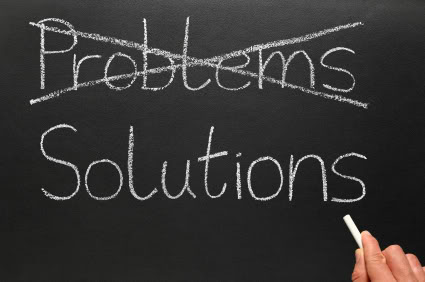U.S. EPA Proposes NESHAP for Chemical Preparations Industry Area Sources
On August 5, 2009, U.S. EPA published a proposal for the control of hazardous air pollutants (HAPs) from the chemical preparations industry area source category. This source category consists of industrial operations that mix, mill, blend, and/or extrude chemicals that contain chromium, manganese, nickel, or lead during the production of chemical preparations. Chemical preparations are compounds that may be used as an intermediate in the manufacture of other products, such as fluxes and rubber compounding chemicals, or sold as a product, such as water treatment chemicals, paints and coatings, drilling fluids, and salt products containing trace mineral additives.
The proposed National Emissions Standard for Hazardous Air Pollutants (NESHAP) would apply to all existing or new manufacturing operations located at an area source that produce chemical preparations by mixing, milling, 
Proposed Revision to NO2 NAAQS Could Pose Problems Under PSD
In the July 2009 issue of 4 The Record, ALL4 included a summary of U.S. EPA’s announcement concerning a proposed new short-term (1-hour) National Ambient Air Quality Standard (NAAQS) for nitrogen dioxide (NO2). The proposed standard will likely range between 150 µg/m3 and 188 µg/m3. Relative to the current annual NO2 standard, it may be difficult to demonstrate compliance with the 1-hour NO2 NAAQS as part of an air quality modeling evaluation for the Prevention of Significant Deterioration (PSD) program. The 1-hour NAAQS will be affected by short-term, worst case dispersion conditions, as well as peak hourly NOx emission rates.
To illustrate the challenges that facilities may face in demonstrating compliance with the proposed NO2 NAAQS, ALL4 performed an air quality modeling evaluation utilizing the AERMOD air dispersion model and emissions from three different types of industrial facilities. The evaluations included a typical pulp and paper facility, a cement facility, and a coal-fired utility boiler. The following components were included in the evaluations:
- Maximum hourly NOx emission rates that would be expected for these industry types were included for all NOx emitting units at the example facilities, as would be required in a PSD air quality modeling NAAQS demonstration.
- Typical industrial building downwash impacts were considered in the model.
- Terrain surrounding the example facilities includes both simple and complex terrain (i.e., terrain above stack heights).
- Representative meteorological conditions for a one year period were used to
model each example facility.
The peak predicted 1-hour NO2 concentrations resulting from the 1-hour NOx emissions from the pulp and paper, cement, and coal-fired utility facilities were 688, 278, and 717 µg/m3, respectively, which are all greater than the proposed NAAQS. These example facilities serve as an indicator that demonstrating compliance with the 1-hour NAAQS may be difficult, and will require a level of strategy and data refinement beyond that which has traditionally been required to evaluate NOx emissions.
Update: PM2.5 New Source Review Regulations
On May 16, 2008 U.S. EPA issued a final rule amending the New Source Review (NSR) regulations to add requirements related to particulate matter with an aerodynamic diameter of less than 2.5 microns (PM2.5). ALL4’s PM2.5 Team published 4 The Record articles in March, April, and June 2009 outlining the requirements of the new PM2.5 NSR rules. Since the promulgation of the final rule, U.S. EPA received a petition to reconsider four (4) specific provisions of the rule:
- A provision that, for states that implement their own Prevention of Significant Deterioration (PSD) permitting program, gives them three (3) years to revise their PSD rules to include PM2.5. To facilities in these states, this provision means that PM2.5 is not required for consideration in a construction permit application until the state PSD rules have been revised.
- A provision that allows grandfathering of PSD construction permit applications submitted prior to promulgation of the Federal PM2.5 rule (i.e., May 16, 2008). This grandfathering provision originally prevented U.S. EPA from requesting PM2.5 emissions information on construction permit applications that were submitted prior to the PM2.5 rule, minimizing additional delays in application review time.
- A provision that excludes the condensable fraction of PM2.5 from consideration during the construction permit review process until appropriate condensable fraction test methods can be developed.
- A provision that allows PM2.5 emissions increases in nonattainment areas to be offset by emission reductions of PM2.5 precursors (i.e., SO2 and NOx).
On April 24, 2009, U.S. EPA granted a three (3) month administrative stay on the second provision above related to grandfathering of PSD construction permit applications. As a result, PSD construction permit 
U.S. EPA Proposes Ozone Season Extension
On July 16, 2009, U.S. EPA proposed revisions to its ambient ozone (O3) monitoring network design requirements. The revisions are in response to the amended primary and secondary National Ambient Air Quality Standards (NAAQS) for O3 that were promulgated on March 27, 2008. Among the revisions to the O3 monitoring network design requirements is a proposed lengthening of the O3 monitoring season in select states.
Ozone is unique among criteria pollutants in that it is only required to be monitored during those parts of the year that are most conducive to O3 formation. The length of the O3 monitoring season varies from place to place according to a number of seasonally-dependent factors (e.g., ambient temperature, strength of incoming solar radiation, length of day, etc.) that affect O3 formation. The current O3 monitoring seasons range from four months of the year in states with cooler climates to 12 months of the year in those places with warmer climates. Based on a recent analysis, U.S. EPA believes that ambient O3 concentrations could approach or exceed the 8-hour NAAQS of 0.075 parts per million (ppm) more frequently and during more months of the year, and that longer O3 monitoring seasons are therefore appropriate in the following 29 states and regions:
- The States/Regions of Delaware, District of Columbia, Georgia, Idaho, Louisiana AQCR 019 and 022, Maryland, Massachusetts, Missouri, Montana, New Hampshire, New Jersey, New York, North Carolina, North Dakota, Pennsylvania, Tennessee, Vermont, Virginia, and Wisconsin will have a revised ozone monitoring season of March – October, which is an increase of one month.
- The States/Regions of Connecticut, Indiana, South Carolina, South Dakota, Utah, and Washington will have a revised ozone monitoring season of March – October, which is an increase of two months.
- The States/Regions of Florida, Mississippi, and Texas will have a revised ozone monitoring season of January – December, which is an increase of four months.
- Wyoming’s revised ozone monitoring season will run January – December, which is an increase of five months.
Given the increased duration of the ozone monitoring seasons, one effect could be increased difficulty for currently designated O3 nonattainment areas to meet an attainment designation and the increased potential for current attainment areas to monitor a violation of the O3 standard and thus become nonattainment. Continued nonattainment or increased areas of nonattainment could result in additional rules for reducing oxides of nitrogen (NOx) and volatile organic compounds (VOC) from existing sources, which are the two O3 precursor pollutants. In addition, there could be an increase in the demand for emission offsets for these two precursor pollutants. U.S. EPA is proposing that the revised O3 monitoring seasons become effective on January 1, 2011.
Pennsylvania Expected to Request “Case-by-Case” Boiler MACT Applications
In the August 29, 2009 Pennsylvania Bulletin, the Pennsylvania Department of Environmental Protection (PADEP) is expected to provide notice that “case-by case” Maximum Achievable Control Technology (MACT) applications will be required to be submitted by facilities that were subject to 40 CFR Part 63, Subpart DDDDD – National Emission Standard for Hazardous Air Pollutants for Industrial, Commercial and Institutional Boilers and Process Heaters (Boilers Rule). The U.S. Court of Appeals for the District of Columbia Circuit vacated and remanded the Boilers Ruleon July 30, 2007. If the notice is published as expected, affected facilities will be required to submit 

 model each example facility.
model each example facility.